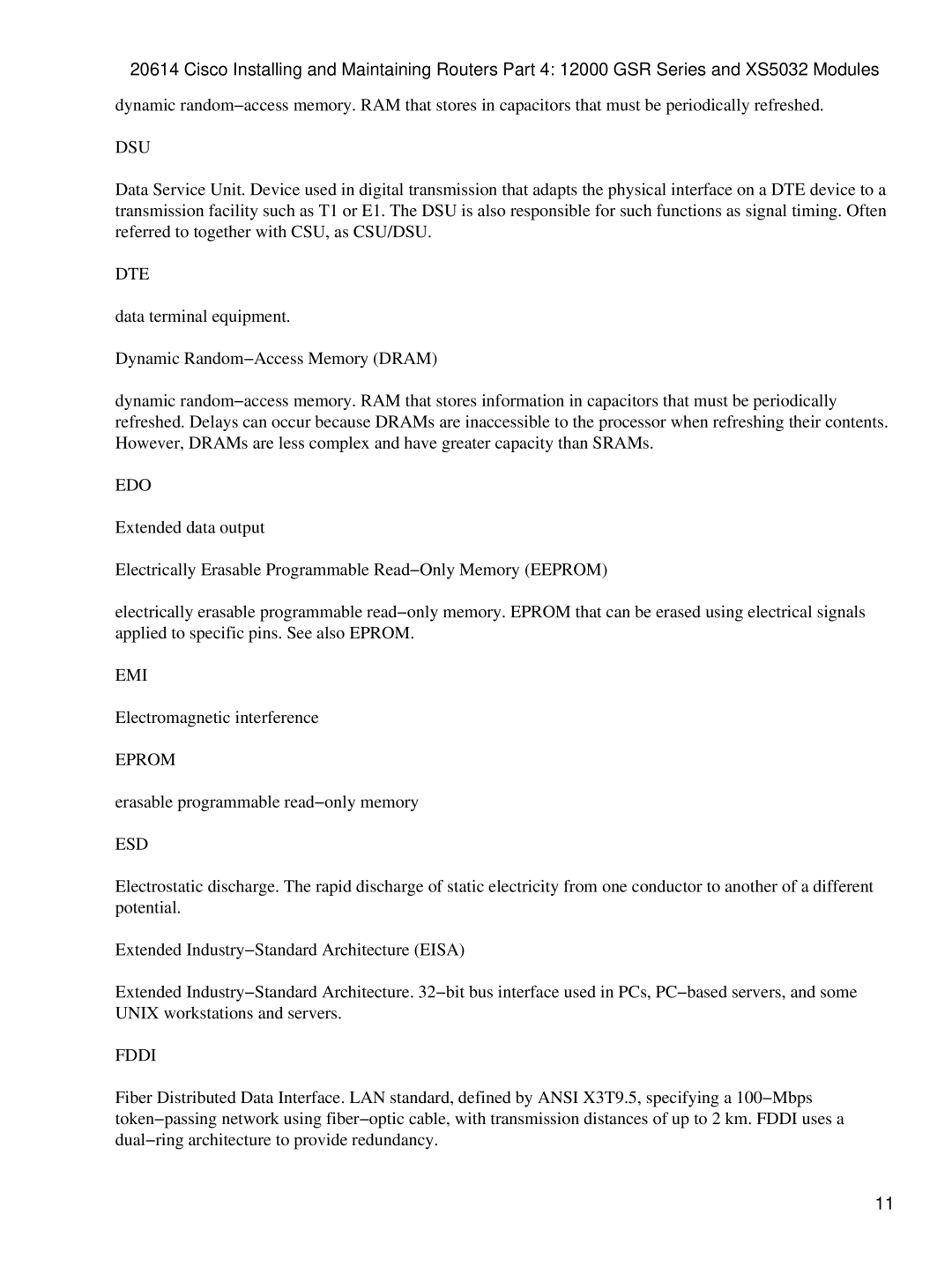12000 GSR, XS5032 specifications
Cisco Systems XS5032, also known as the 12000 GSR (Giant Series Router), exemplifies the pinnacle of networking technology designed for service providers and large enterprises. It delivers advanced features, superior performance, and unmatched scalability, catering to the ever-evolving demands of data traffic.At the core of the XS5032 is its high-speed forwarding architecture, which utilizes enhanced media access control (MAC) and optimized packet processing. This facilitates exceptional throughput, supporting up to 32 10G or 16 40G ports, enabling seamless data handling and redundancy. The router's versatility allows it to accommodate a variety of networking configurations, making it suitable for both core and edge deployments.
One of the standout features of the XS5032 is its support for Multi-Protocol Label Switching (MPLS), essential for efficient data packet routing across IP networks. Coupled with quality of service (QoS) capabilities, the router ensures optimized performance for voice, video, and data services. With advance QoS features, ISPs can prioritize traffic effectively, ensuring a quality user experience for critical applications.
The XS5032 also integrates Cisco's advanced security frameworks, providing robust safeguards against emerging threats. Built-in Secure Access control allows network administrators to enforce policies that secure both the data and infrastructure against unauthorized access.
Scalability is another hallmark of the XS5032. With the capability to incorporate additional modules and upgrade paths, it positions itself as a future-proof investment for businesses anticipating growth. High availability features such as redundant power supplies and cooling systems ensure that network uptime is maintained, catering to the critical requirements of service delivery.
In terms of management, the XS5032 is equipped with Cisco’s renowned management tools, including Cisco Prime and Cisco DNA Center, simplifying network oversight and allowing for insightful analytics and performance monitoring.
Overall, the Cisco Systems XS5032, 12000 GSR serves as a robust backbone for modern telecommunications networks, combining innovative technologies with essential features that enable organizations to navigate the complexities of today’s data-centric environment with confidence. Its performance, reliability, and adaptability make it an integral component for any organization striving to stay ahead in the digital landscape.
